IPPTA annual seminar with the theme ‘Sustainability of Paper Industry – Sustainability is Responsibility’ was held on March 12-13, 2015 in Hyderabad, concluding as the final event of the Golden Jubilee year of the association. The occasion seemed opportune to raise the issue of sustainability on a broader platform to engage a wider congregation of the industry’s stakeholders. In the wake of emerging climate change scenario and rising clarion call to action on the sustainability front, such debates and brainstorming becomes pressing for every industry. The Indian pulp and paper industry has given a fitting and timely response to the call by making the important event a stage for debating and finding solutions with regard to sustainability.
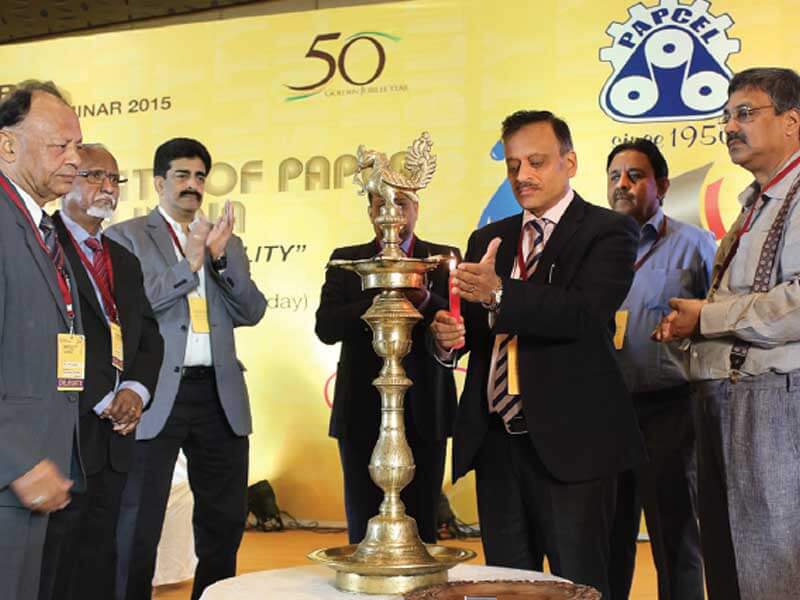
“IPPTA has consciously chosen the theme of its Annual Seminar as ‘Sustainability is Responsibility. Unlike the industries in mining and extraction of natural resources, our industry has the unique advantage of nurturing the nature and replanting many more trees than the ones used as raw material,” said Mr. Sanjay K Singh, President, IPPTA.
For sure, this engagement of IPPTA with an all-important issue is going to mitigate the negative image, of harming the nature, associated with the industry in coming times. The event saw resolute stand of the entire pulp and paper industry by highlighting the environmental consciousness and positive side of the industry.
.
.
Sustainability Led Market Shifts

Welcoming the delegates, Mr. Neehar Aggarwal, Vice President, IPPTA, said, “In the last few years, the landscape of the Indian paper industry has changed very rapidly. There are a lot of market shifts which have led to these changes. Some of these are decreased use of fiber, light-weighting of paper, resource conservation w.r.t. water, energy and fiber, etc. A common thread connecting all these changes is sustainability.
“The Indian paper industry tells a very good growth story as far as sustainability is concerned. We have taken a giant leap forward in the last few years towards improving sustainability and reducing the environmental impact. Some of the examples of sustainability drive by the industry are chlorine free bleaching in mills, improvement in recovery rate of chemicals, reduction of fiber in the paper, and several other major steps to improve the energy conservation in the plants.
“The primary raw material we use is bio-sourced and bio-degradable which are procured through social farm forestry route. Generally, the sustainability is understood in terms of protecting trees only. However, the meaning of sustainability may be better derived from a myriad of conservation practices which include fiber, energy, water conservation, and of course, making the mills more competitive. Moreover, taking care of communities, stakeholders / shareholders, and owners may also be contained in the industrial sustainability concept. Apart from making the industry green, we also have to ensure that the industry remains competitive; then only it can be truly sustainable.
“Last year, the Centre for Science and Environment, a leading opinion maker on environment, came with its third Green Rating exercise in the paper industry. As per the report, the sustainability practices on the paper industry are good. The biggest improvement in the Indian paper industry on the environment front has come in terms of specific water consumption according to the report. Till 1995, the average water consumption in the Indian mills was 250 cubic meters per tonne which has come down to 65 cubic meters per tonne as published in 2013 report. This is almost a 70 percent reduction in water consumption.
“Similarly, the energy consumption has come down from 72 GJ/tonne to 44 GJ/tonne, again a 44 percent reduction. Till 10 years ago, almost 30 percent of the fiber was sourced from the government owned forests. At present, the sourcing from government owned forests is almost negligible and 95 percent of the wood is being availed through social farm forestry route which is promoted by the industry in association with farmers.
“Moreover, there have been a lot of technologies put in by the industry and have led to a significant reduction in the water and carbon footprint of the industry.
“While there have been a lot of improvements on the sustainability aspect, there is a small rider- our energy and water usages are still way above the global average. This is something where the industry needs to work hard.
“The pollution norms are getting tightened by CPCB and new norms to be notified would be quite stringent. The industry will have to put their hands together in meeting these norms and making the mills more environment-friendly.
Paper Industry: The Most Sustainable
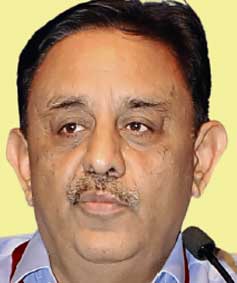
In his presidential address, Mr. Sanjay K Singh confidently averred that the paper industry is the most sustainable industry based on its raw material composition and its bio-degradability. “We are the most sustainable industry in the world and I have the data to support my assertion. The raw materials we use are trees, or waste paper, or agro residues. Tell me one industry which has got the raw material which can be grown for the next million of years. Other industries are mostly based on minerals as their raw material which have got limited reserves and will be exhausted owning to their profuse use,” said Mr. Singh.
Mr. Singh urged all the media persons to talk about the sustainability aspect of the paper industry which will help dismantle the negative image it has adorned in people’s perception. He spoke about how the industry is hitting the bad patch regarding profitability and yet investing on technology and sustainable practices.
Driving home his point, Mr. Singh cited an example about how the industry is adhering to green protocols. “Here at ITC, Bhadrachalam, we use the water from Godavari. After the usage, water is discharged after proper treatment to farmers who use it for irrigation purposes. This water is of absolutely fine quality and farmers are now able to grow three crops in a year which was restricted to just one crop a year previously. The income of framers using this water has grown considerably which is a sign of our strict adherence to sustainable practices and our service to community,” said Mr. Singh.
On industry’s constant effort to minimize resource usages, Mr. Singh noted, “We used to use a lot of water, around 200 cubic meters per tonne for large integrated mills. But today, some of the integrated mills are using only 40 cubic meters per tonne and for non integrated mills the number has come down to even 2-3 cubic meters per tonne. This proves the commitment of our industry towards resource conservation by bringing about the significant reduction in usages.”
The conservation of nature today signifies a lot and every quarter of society is attempting to address the challenges nature is facing in terms of pernicious climate change. Sustainability is very broad concept that follows this effort towards conservation of nature. “Working with nature always pays back. Initially, it may seem like you are spending lots of money without any appreciable return, however it pays back substantially if the returns are accrued over a long period of time,” said Mr. Singh.
Mr. Singh also emphatically dispelled the notion that paper industry is fed the raw material by feeling the trees and hence it’s not sustainable. “For every tree we cut, we plant far more trees. There is a wrong notion and a negative image about the paper industry that we only cut trees. Unlike the industries in mining and extraction of natural resources, our industry has the unique advantage of nurturing the nature and replanting many more trees than the ones used as raw material,” he said.
Today, businesses and sustainability are being increasingly combined together by government’s legislations and various product certifying bodies so as to compulsorily make the industries take note of this serious issue. Many businesses and enterprises find it nagging and undesirable impediment in the way to business growth. Mr. Singh, however, pointed the positive consequences of such binding sustainability protocols in long terms.
“We export a lot of boards and we need the FSC certification after ensuring all the wood and waste paper used are well certified too. We spend a hefty sum in procuring this certification. Our export is to countries like UK and Europe where customers are not willing to pay extra when you tell them about the cost incurred in availing the FSC certification. But this must not dissuade anyone from going forward for such sustainability certification as they may not change your price position; they certainly make you a part of certified part of supply chain in Europe which greatly benefits your business,” said Mr. Singh.
Mr. Singh also underlined that return on investments will follow only through the internal efficiencies which, in turn, would be the result of reducing wastage of water, energy and fiber. He also advocated the efficacy of such forums to discuss important and vital issues related to sustainability. “After the discussion, when we return to our mills, we have to see what all we can do about bringing efficiencies in operations by adhering to sustainable norms,” he said.
Questioning Mindset

IPPTA seminar, perhaps, was one of the rare occasions where representatives of other industries were also invited to share their perspectives on the issue of sustainability. Such eclectic approaches and perspectives give more concrete answers in terms of solutions the paper industry is trying to find as regards to the question of sustainability. Mr. G. S. Krishnan, Regional President (India), Novozymes South Asia Pvt. Ltd., was one such luminary who spoke on various questions of sustainability from the biotechnological perspective. Mr. Krishnan said that plenty of solutions and technology is available, yet India is far behind its peers in adopting these.
He questioned the mindset of the Indian industry and said, “Capabilities are here, but we are not ready to adapt to that for simple reason of prevailing mindset. We all believe in our traditions and that would take some time to change. However, it’s not that everything is static; things are changing too. The same set of industries which, a while before, were reluctant, are now willing to implement more biotechnological solutions.
Mr. Krishnan also stressed the significance of sustainable bio-solutions in addressing the key challenges faced by every industry on sustainability front. “Very clearly, the world is changing. The pulp and paper associations, government’s regulations, and other green organizations are influencing the global pulp and paper production. Globally, pulp and paper producers are increasing their sustainability ambitions. The way forward, according to me, would be very, very clear i.e. sustainable biotechnology solutions would be the key to the success of this industry,” he said.
He added, “Of course, it not only protects the environment; it gives the industry a level playing field to become a global leader.”
Sustainability of Paper Industry: A Broader View
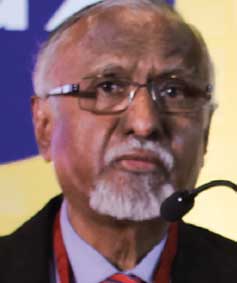
Dr. Prodipto Ghosh, Distinguished Fellow & Director, TERI, was the Chief Guest at IPPTA Annual Seminar. In his address, Dr. Ghosh took a broad view of sustainability in relation to the Indian paper industry wherein he raised many issues and challenges the industry is facing. “The theme is sustainability of paper industry in India. I would somewhat take the broad view of sustainability to include what also goes beyond environmental dimension,” he said.
“It is conventional wisdom that the per capita consumption of paper reflects the level of development of a country. India’s consumption in 2010-11 was just 5.5 kg per capita per year. This is just 1/10th of the global average. However, the growth rate of the pulp and paper industry is high at 10.6 percent per annum.
“There are several types of challenges which must be met if we are to increase our pulp and paper production at the rate required to catch up with the developed world in few decades. First, we must find additional and new sources of raw material. Second, we must minimize the environmental impacts of the pulp and paper industry. Third, with the increasing digitization of all human activities, the pulp and paper industry must change in fundamental ways if it is to remain relevant in long term and if it is to have a future.”
Sourcing additional raw material
Dr. Ghosh talked at length about the key issue which the industry has been perennially facing-the sourcing of additional raw material. He strongly advocated the need to look beyond the traditional eucalyptus and poplar to expand the source. Also, the scope of sourcing timber from social and agro forestry route is reaching its limit and, hence, this becomes imperative to identify new forest species to be cultivated. The current regulatory framework, of course, is not favourable to farmers where any timber which is notified as forest species (includes all bamboos, etc.) needs to be grown for 12-15 years before felling and a transit permit is also required before selling. Such regulations should be rationalized, as per Dr. Ghosh.
The utilization of vast tracts of degraded forest land under the forest departments and other unutilized land under various public sector organizations like Railways was also stressed by Dr. Ghosh. He said, “During 2005-07, MoEF formulated a policy on multi-stakeholder partnership to unlock these lands by assigning them competitively to the industries that require soft timber for defined periods without transfer of title. This policy went through all the required consultations during UPA-I Govt., but it was ultimately scuttled by some activists. It is my belief that current political dispensation will revive these initiatives provided the industry leaders make a serious outreach to the Govt. at the highest political level.”
Dr. Ghosh also pointed out many untapped sources of raw material which, though, requires significant research before any of them can be utilized. Many of these potential sources pose serious environmental problems too. “In many areas in North India, rice straw, for example, is not utilized and burnt giving rise to huge level of air pollution,” he said.
Species like Prosopis Juliflora may also serve as an additional raw material source. “Sourcing these raw materials for the pulp and paper industry would address both the issues of local level environmental problems as well as that raw material availability,” said Dr. Ghosh.
Environmental issues
Talking separately for the environmental issues prevailing in the pulp and paper industry, Dr. Ghosh picked up select points to be delineated upon in order to find concrete solutions. Beneficial use of lignin, conversion of steam boilers, and the elimination of toxic chemicals were highlighted by him.
“Beneficial use of lignin, which is currently burnt, must be found. The burning of lignin gives rise to toxic emissions. This is an inefficient use of raw material. Lignin can be converted to dimethyl ether which is an important raw material for paper chemicals industry. This involves no new technology and the technology required is available off-the-shelf commercially,” said Dr. Ghosh.
“The conversion of steam boilers into super critical boilers to generate both steam and power must be contemplated by big integrated mills. This is already being done on large scale by the sugar industry and this will reduce, if not eliminate, the reliance on the coal based power for the pulp and paper industry, thereby, reducing the air pollution and GHG emissions.
“Sustainability issue may be also addressed by the elimination of toxic chemicals as far as possible from in-plant sources. For example, chlorine may be replaced by oxygen for bleaching. There are various other measures to ensure that the discharged water is fit for irrigation.”
e-Commerce as opportunity
Dr. Ghosh is of the opinion that paper packaging may serve as biodegradable substitute of plastic packaging and that e-Commerce is emerging as an opportunity for the paper industry. He said, “The e-Commerce industry is rapidly taking off. It is now a multi-billion dollar industry in India just in few years. Many of us have started buying whole pile of things online. But, the e-Commerce sector has, in nature of its functions, many more requirements of packaging than traditional retail.
“e-Commerce has to package everything for transport. I think that the pulp and paper industry can creatively engage with this growing sector to identify new types of packaging that can also be recycled and reused. This also goes to the question of plastic packaging where, through proper R&D, a biodegradable substitute of plastic packaging can be evolved.”
Sustainability: A Panel Discussion
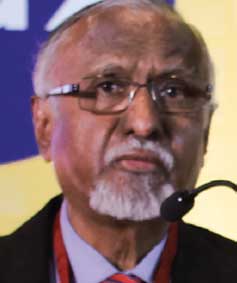
IPPTA annual seminar also set the stage for a panel discussion on the theme ‘Sustainability’ to engage various stakeholders for a debate on why the industry needs to become green and sustainable. The panel discussion was moderated by Mr. S. Raghupathy, Executive Director, CII-Sohrabji Godrej Green Business Centre, where he said, “Every step a business house takes to make its operations pro water, energy, fiber conservation and in the direction of safeguarding ecological balance helps steady its top-line and bottom-line.”
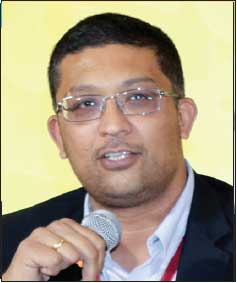
Mr. Rampraveen Swaminathan, VP & President- India, International Paper, said, “In global major companies, the ecological concerns are part of long terms strategies that also can be seen to determine day-to-day operations. One of the best ways to motivate the team and make them participate in the conservation drive is to incentivize conservation efforts with incentives.”
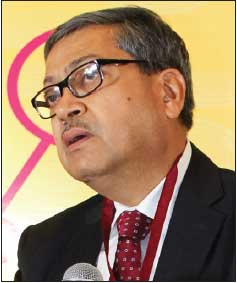
.
“Indian paper and pulp industry has conservation imbibed in its mindset. Unlike the west where they undertake such measures as part of a well laid strategy, we undertake them as part of our culture. Still, there is a lot more that’s desired,” said Mr. Anil Kumar, Executive Director & CEO, Shreyans Paper. “Reducing water consumption by 70 per cent from earlier levels was comparatively easier. Going forward, we will need more concerted efforts to bring the water consumption levels at par with international practices. It’s the responsibility of all the stakeholders, big or small, to comply with legal requirements and also create due provisions in time that meets best international practices. It certainly helps steady the top-line and also gives opportunity to go global and grow the bottom line as well.”
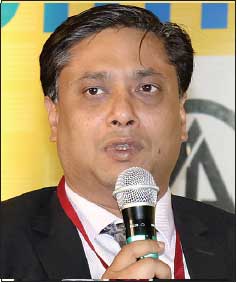
..
.
Mr. Varun Jain, Chief Operating Officer, Khanna Paper Mills, said, “We need new energy to deal with the environmental issues pertaining to our business. The suppliers are an important mine of information, who can provide many valid operational suggestions to stream line our processes and better products and offerings. It’s high time that we look at joint-participation and collaboration to rise to the sustainability challenge.”
.
.
.
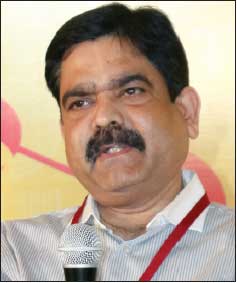
.
Mr. Swapan Kumar, Senior Director and Head Sustainability & Environment, Dr. Reddy’s laboratories, said, “Environment is to always be seen as an asset. Monitoring sequence of operations closely and tweaking them only a bit can lead to enhanced profitability and sustainability.”



